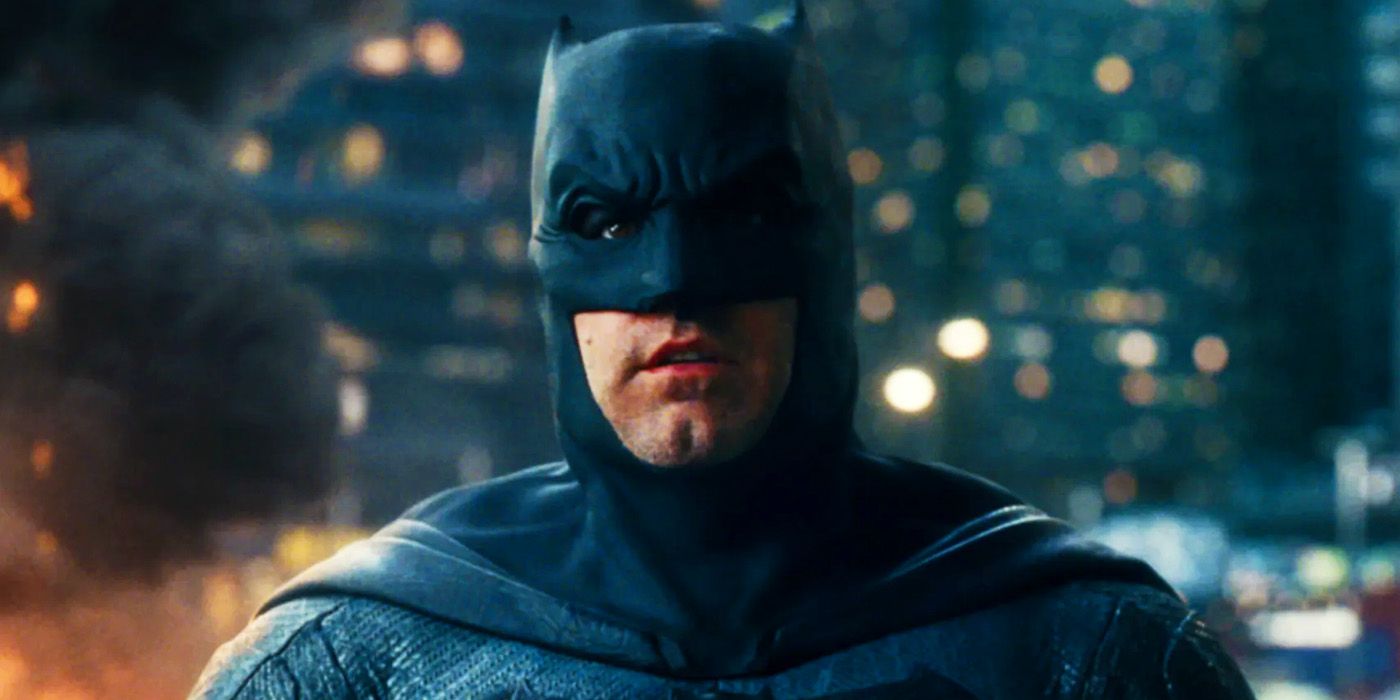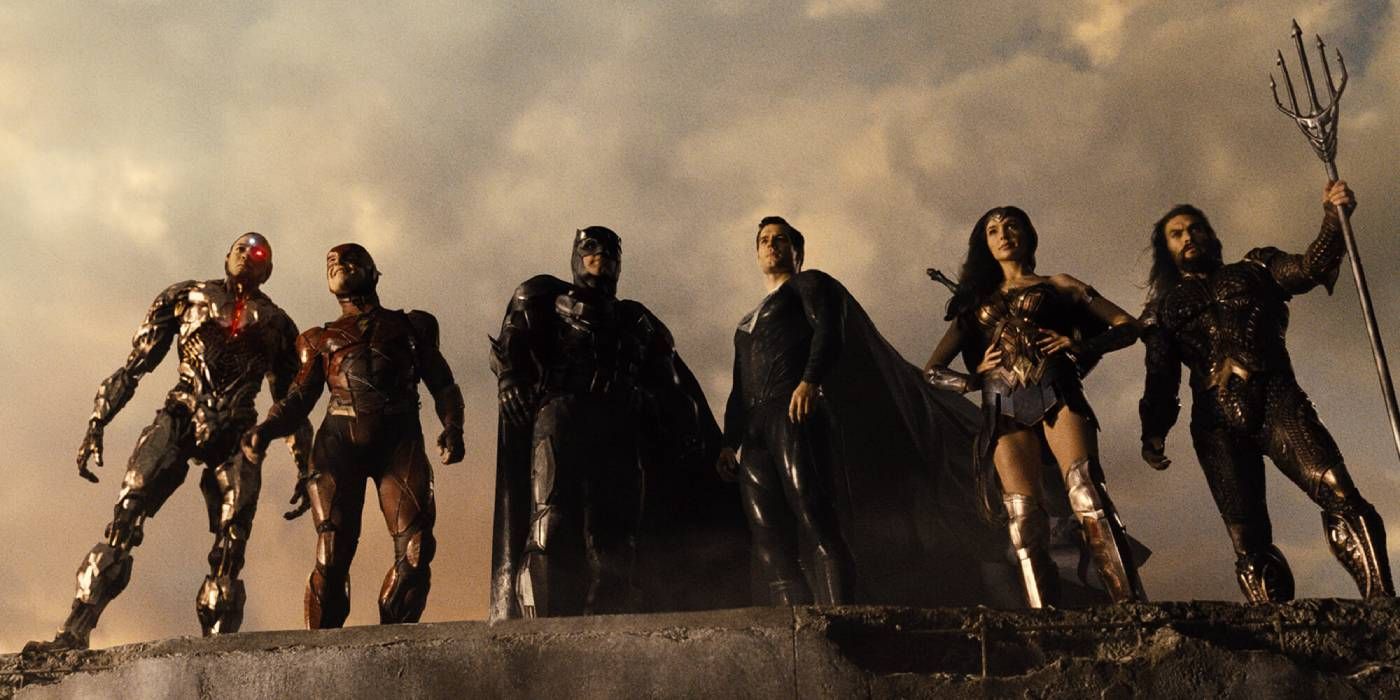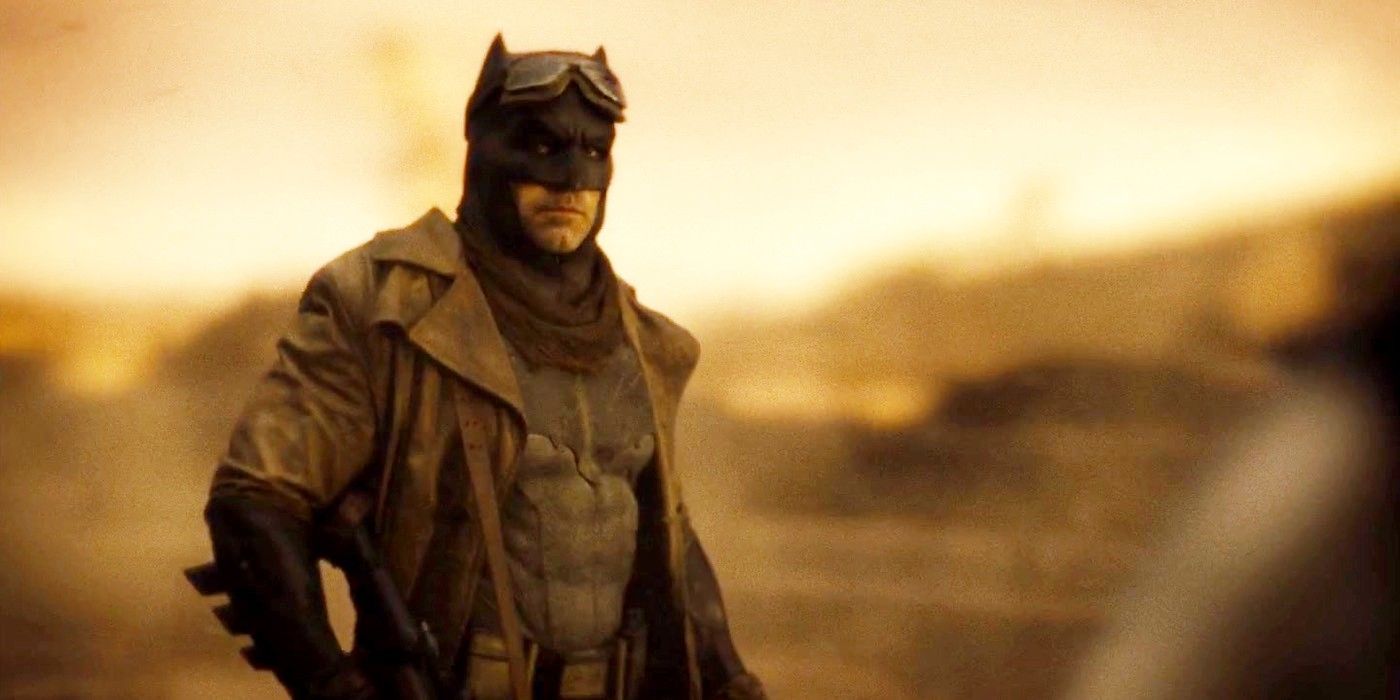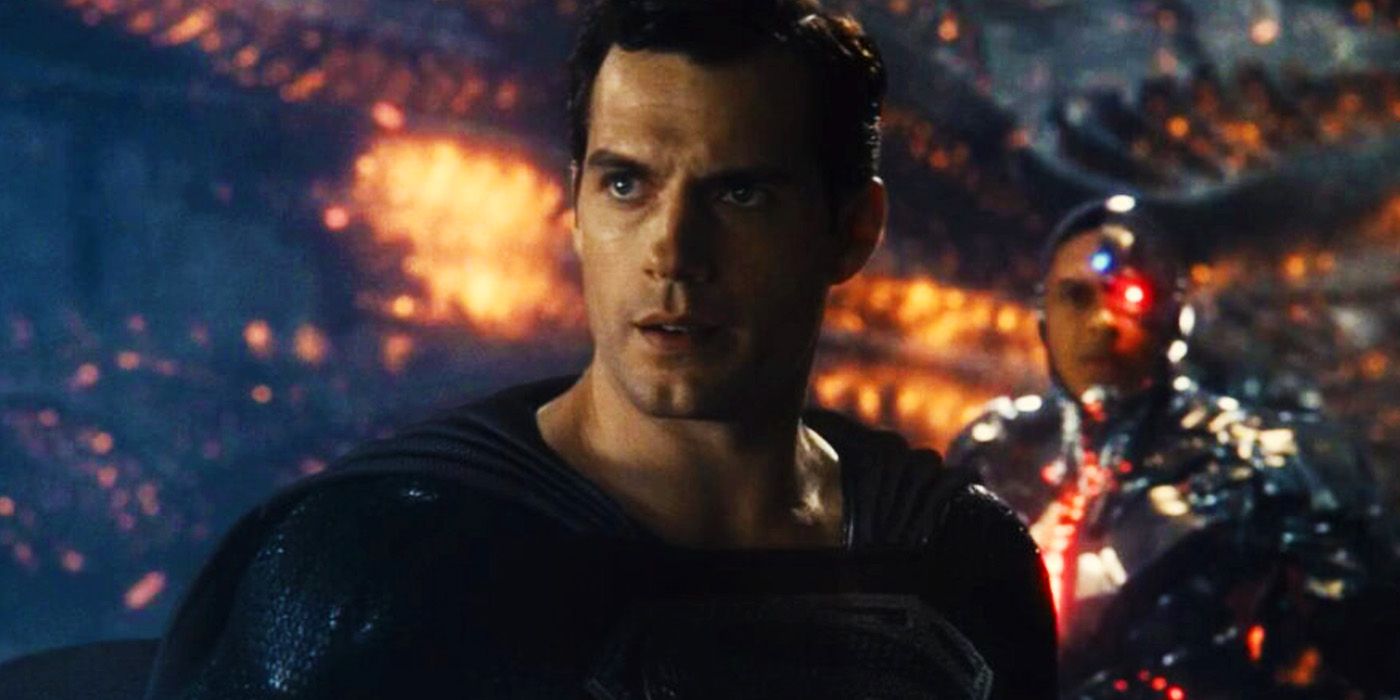Zack Snyder’s Justice League debuted in March 2021, four years after Joss Whedon’s theatrical cut in 2017, and there are now four different versions of the Justice League movie. However, there are actually four total versions of the DCEU movie in addition to those available to stream on Max. There’s also the original script that Snyder and Chris Terrio worked on (which was totally rewritten before shooting began) and the original 214-minute Zack Snyder cut, which existed prior to Zack Snyder’s Justice League releasing on HBOMax.
Though Zack Snyder began work on Justice League, the writer/director left the project due to unforeseen family trauma. Whedon, who’d established superhero credit by directing the first two Avengers movies, took over and delivered a Justice League movie far different than Snyder’s original vision. Which version of the movie audiences prefer is a matter of taste, but it’s rare for a blockbuster to have such wildly different versions available to watch.
Why There Are Four Version Of The Justice League Movie
In 2019, director Zack Snyder held a charity event to screen his director’s cuts of Dawn of the Dead, Watchmen, and Batman v Superman: Dawn of Justice to help raise money to replace the aging theater at his alma mater, ArtCenter College of Design in Pasadena. During the event, Snyder revealed some of the biggest bombshells about what actually happened to his original Justice League plans, including some major script changes that occurred before the movie even started production because of the reception from Batman v Superman.
The confirmation that Zack Snyder and Chris Terrio’s original script was rewritten before Snyder began work on his initial filming isn’t terribly surprising given how often scripts change in pre-production. However, Whedon’s changes were more substantial and seemed to add some humor to the movie, make it less serious, and attempt to bring it in line with the MCU. Zack Snyder’s Justice League was later given funds to support HBO Maxx while theaters were closed.
Zack Snyder & Chris Terrio’s Original & Rewritten Justice League Script
Snyder said he worked with Chris Terrio to complete the script prior to Batman v Superman: Dawn of Justice and the film’s divisive reception forced them to reconsider their approach (via The Playlist). Snyder referred to this script as “the really scary version.” He said Warner Bros. told him that many elements from the original script had to be changed. Snyder said that “the original Justice League script, we didn’t even shoot.”
Snyder referred to this script as “the really scary version.”
Zack and Deborah Snyder both confirmed during the Justice League set visit that the reception to Batman v Superman: Dawn of Justice had impacted Justice League’s development. Producer Jon Berg also said in an interview that while things were always intended to get lighter after Batman v Superman, “We accelerated the story to get to the hope and optimism a little faster” (via The Wall Street Journal). There’s very little known about how this script differed from the version of the movie Snyder shot other than a controversial romance between Lois Lane and Bruce Wayne.
Snyder has said his plan was for everything to revolve around the Knightmare sequence first glimpsed in Batman v Superman: Dawn of Justice. It’s something that survived the rewrites and would have been more heavily featured in future films, something he was certainly gearing towards for a potential (and unmade) Justice League 2 and Justice League 3. These sequels would have centered on changing the past to avoid the Knightmare future. Then there’s the rewritten version of the original script, which is what fans referred to when people discussed wanting to see the Snyder Cut.
The director storyboarded and shot 100% of this version of the movie and was well into post-production before leaving. The Knightmare timeline focus was still present, and Darkseid played a major DCU role in the background, with his lieutenant Steppenwolf serving as the chief antagonist. This version contained more backstory for the new characters: Flash, Cyborg, and Aquaman, and included more of their supporting characters like Iris West, Victor Stone’s mom, Vulko, and more. However, it wasn’t exactly the same as the later-released “Snyder Cut.”
The Joss Whedon Reshoot Script
This is the version of Justice League released in theaters. It’s based on Snyder and Terrio’s rewritten script but had significant alterations by a team of writers, including Geoff Johns, Joss Whedon, Allan Heinberg, Seth Grahame-Smith, and Andrea Berloff. Ultimately, Joss Whedon’s alterations made the biggest impact and earned him the director role for reshoots after Snyder left the production. He’s credited as a writer on the movie, which, per WGA standards, means he was deemed to have had a 33% influence (not necessarily page or word count) on the final product.
Whedon reshot Superman’s role and the circumstances of his resurrection almost completely.
Whedon reshot Superman’s role and the circumstances of his resurrection almost completely, sidelined Cyborg, removed all references to the Knightmare, and added numerous quips to try and lighten the mood. The film was largely maligned when it was released, and it sent the DCU in another direction entirely afterward, with Wonder Woman, Aquaman, and Shazam! adding the hopeful optimism Warner Bros. wanted from Justice League. It wouldn’t be until years later that the campaign to “Release the Snyder Cut” would finally come to fruition.
Zack Snyder’s 214-Minute Director’s Cut of Justice League
Zack Snyder’s director’s cut of Justice League is what most people were referencing when they said the “Snyder Cut” up until 2020. This version of the Justice League movie’s CGI was never totally completed and had a green screen and pre-vis in place of finished visuals in many scenes, although a significant portion of VFX was completed. Junkie XL actually completed a different version of the score for this edit of the film, although the version Snyder had on his hard drive was actually still using temp tracks from his previous DC films and a few other movies.
This version is generally the same as the version of the movie ultimately released, but Steppenwolf’s design is the same as the version seen in Whedon’s cut of the movie (as Snyder was forced to make that change before Whedon was brought on). Also, Darkseid’s presence was smaller, despite setting him up as the big bad that was supposed to be coming, and this also meant there was less Knightmare, particularly the epilogue scene, which was shot in 2020 for Zack Snyder’s Justice League.
Zack Snyder’s Justice League
In May 2020, it was announced that Zack Snyder’s Justice League would finally be released. Initially, Snyder was asked to release his director’s cut of the film that was done filming without completing post-production, but the director refused. This version of the film is basically what the planned theatrical release would have been had Snyder not left and Whedon not taken over, but there are marked differences as Snyder added and filmed new scenes, including an extended sequence featuring the Knightmare future in an epilogue that saw Jared Leto reprise his role as the Joker from David Ayer’s Suicide Squad.
It also brought back Amber Heard’s Mera and Joe Manganiello’s Deathstroke for the scene as they comprised Batman’s team in the future alongside Cyborg and The Flash. Beyond that, 2021’s Justice League clocked in at a little over four hours and included a new score, as well as all of Snyder’s originally filmed footage. Scenes that were originally deleted from Snyder’s previous cut were added back in so that fans could get the full scope of what the director had in mind and how this version of Justice League set up what was to come in the now-canceled sequels.
Zack Snyder’s final iteration of Justice League finally getting a chance to be seen in its entirety was a win
In this version, all the Cyborg scenes were restored, with the Knightmare sequence once again teasing at a bleak future. In addition to all that, a shot of Batman standing atop his Bat-Tank was something Snyder included in the film at the last minute. While WB wasn’t interested in carrying on with Snyder’s vision of the DCU (and it contradicted other films in the universe), his final iteration of Justice League finally getting a chance to be seen in its entirety was a win.
Which Version Of Justice League Is Best?
Many felt Zack Snyder’s Justice League was the best version. While there’s no shortage of aggressive fandom around the notion that WB should have stuck with Snyder’s plan, that doesn’t render the demand for it moot. Zack Snyder had a distinct vision for the franchise, and in curbing that, WB made a grave error that was made more apparent both by the original Justice League’s mediocre box-office performance.
The full Zack Snyder version, on the other hand, is a darker, edgier, and more comprehensive movie. The other versions of Justice League have their place as a timely reminder of what happens when studio executives meddle too much in the creative process. It’s not even that the other cuts don’t appease the fandom to some degree, but they’re also generally lackluster movies. The only drawback of Zack Snyder’s Justice League was that it gave fans a glimpse of a DCU that never was, one that perhaps would have fared much better.
Which Version Of Justice League Reviewed The Best
Of the four versions of the Justice League movie that are known about, Zack Snyder’s Justice League stands out as the most well-received and well reviewed – though it is worth noting that only the 2017 version of the movie and Zack Snyder’s Justice League are the only two iterations that were really in competition, partially because of the production process and partially because the major differences between them inherently raise questions of which critics and audiences alike preferred.
Zack Snyder’s Justice League has a 71% critic score on Rotten Tomatoes, and a 93% audience score, putting it well above the 2017 Justice League, which itself has a 40% and 67% score in these respective categories. IMDB gives the 2017 Justice League a rating of 6.1/10, which once again is lower than Zack Snyder’s Justice League, which has an IMDB score of 7.9/10. This appears to accurately reflect the consensus on the two versions of the film, though it’s worth noting that the excitement regarding the second release actually coming out after years of uncertainty likely also factors into its overall score.
Overall, the reviews for Zack Snyder’s Justice League tout it being a richer version of the story, that explores its characters and world more in-depth and with more emotional poingnancy than the 2017 release. This is something that’s especially clear when it comes to characters whose stories were almost entirely removed by the 2017 edition, as it seems many arcs were initially planned only to be removed in the initial Justice League release. However, this isn’t to say that there were no criticisms of the 2021 movie, as the film’s length and serious tone saw some considerable derision.
What’s Next For The Justice League Movies?
In 2023, everything changed for the DCU. Not only was Zack Snyder and his original vision for the Justice League gone, but the entire universe was rebooted in the aftermath. James Gunn and Peter Safran’s new DCU will start from scratch with new versions of DC’s iconic heroes – and while some DCEU figures like Peacemaker are carrying over, these vast majority of characters are to be revamped. As such, there’s no current next step for the Justice League seen in the DCEU, especially now David Corenswet has taken over from Henry Cavill as the DCU’s new Superman.
This appears especially clear in the approach the early DC Universe already seems to be taking to its overall story, as while 2025 will bring a solo Superman movie, the story of the release looks set to have other superhero teams outside of the Justice League established, and thus is geared up to focus on other factions outside of the DCEU’s focal team for at least the first stage of its cinematic run. Given key Justice League members like the Flash and Aqaman are missing from the current DCU lineup entirely also, it seems unlikely the franchise would go forward with the team without first introducing core members.
There is a chance the Justice League could come back far in the future of the DCU in some sort of multiverse capacity, but that seems more unlikely with each step the DCU takes away from the DCEU – especially with multiversal releases having become more conventional and less exciting in recent years, and The Flash showing how stories in this vein can potentially fail. However, the superhero landscape is one that’s no stranger to having the almost impossible become possible, and capitalizing on the popular elements and castings in the DCEU later down the line could well work.
While that may be disappointing for fans of the earlier shared universe, it seems for the best in the interest of a self-contained and easy-to-follow film franchise, and to ensure that DC can begin to build a new cinematic future from a relatively clean slate, potentially allowing some of the dreams had for the DCEU to still coe to fruition. However, what happens next, Justice League will always be available to rewatch.









